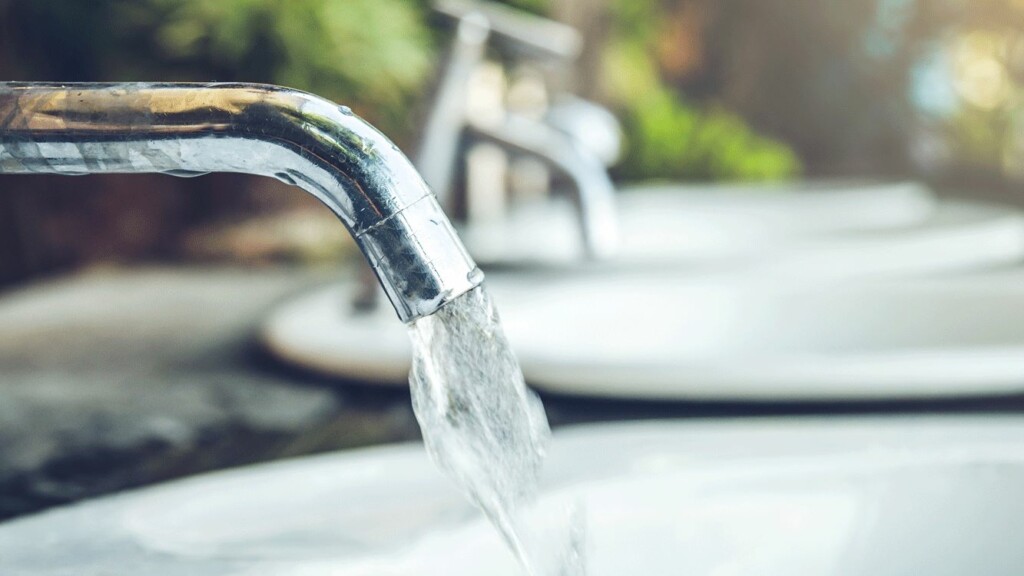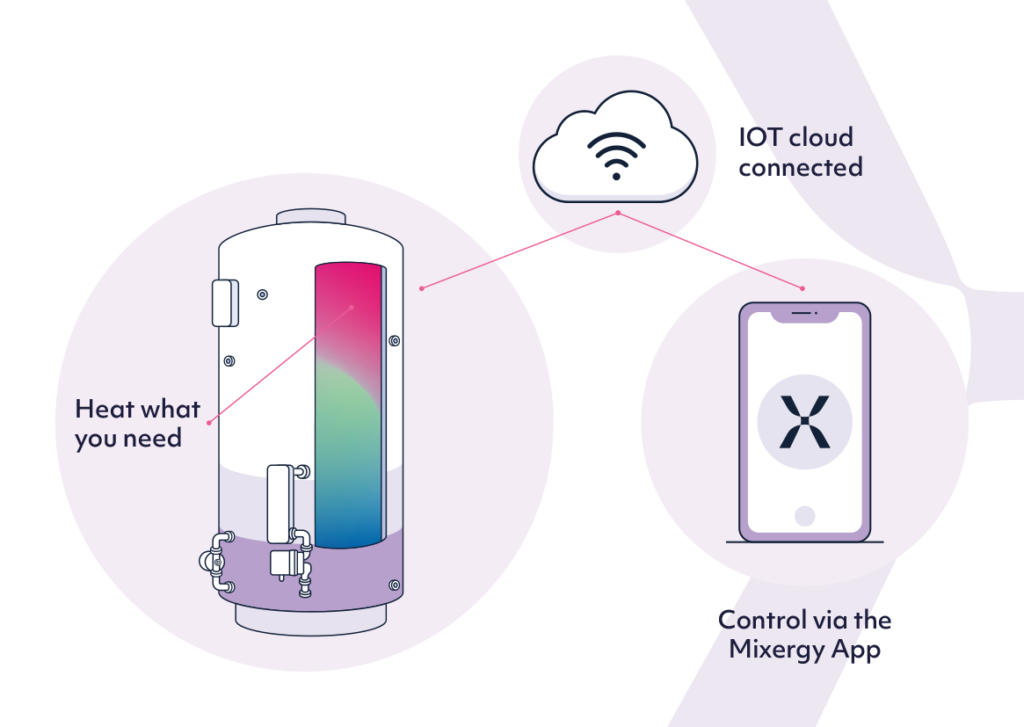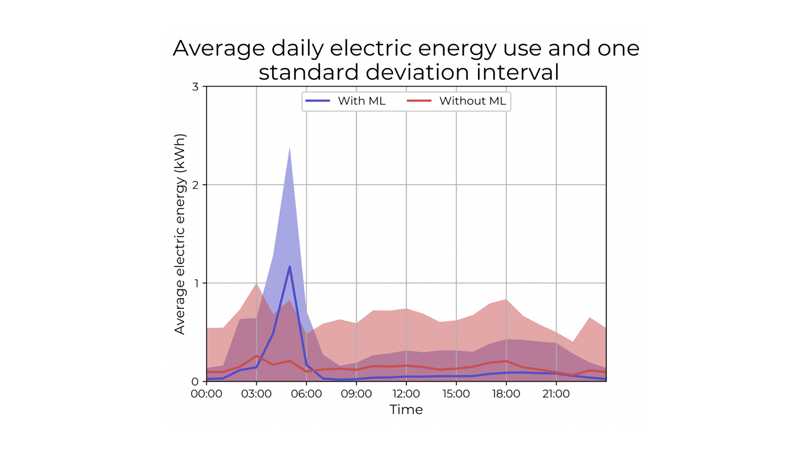
What about decarbonisation of water?
I have been a heating engineer for over 20 years and have been guilty myself of overlooking hot water as just an add-on to a heating system.
Over the last few years, discussions on decarbonising heat in buildings have centred around heating, whether heat pumps or hydrogen boilers. Assumptions have been made that by decarbonising the source of heat, hot water will, therefore, be decarbonised as well.
Can carbon emissions be reduced even further from hot water production by using hot water as an energy store?
This is what drew me to join #TeamMixergy and take up the mission to give hot water its place in the decarbonisation of buildings!
Traditionally a hot water cylinder has either a coil connected to a boiler or an immersion heater in the bottom to create hot water through convection. A heat pump cylinder has a larger coil that goes from the top of the cylinder to the bottom as it needs more surface area to heat water due to typically lower flow temperatures (although some heat pumps now give higher flow temperatures).
These methods of heating are used, as traditionally, we want to create as much hot water as possible for the household to make sure they don’t run out. People can live without their heating for a short period of time, but a cold shower will ruin anyone’s day!
But what happens when you go from a family of 5 in a 4-bedroom house, down to just 2 occupants? The children have left the nest and you are left heating a 300-litre cylinder and only using between 60 – 100 litres of hot water a day. Wasting energy, money and unnecessary carbon emissions through standing losses. Recovery times are also affected as you are having to heat up 300 litres each time, to ultimately use less than a third of a tank.
The other unknown with a traditional hot water cylinder, is how much hot water is actually in there? The draw-off at the top of the cylinder may be hot but is that just the last 30 litres after someone else has drawn the majority of the hot water out of a full tank?
Hot water convects heat very easily and you get lots of hot water above the immersion/coil but it’s poor at conducting heat which leaves cold water below the immersion/coil. As a result of poor conduction, you have a grey area below the immersion/coil that is colder, and the water never achieves a pasteurising temperature for legionella. From a local authority, social housing, and commercial perspective, how can we pasteurise 100% of the cylinder to remove that risk and create a digital record to report back that this has been done in compliance with water hygiene policy?
Traditionally, hot water is controlled by a timer and cylinder thermostat strapped to the side of the tank. The timer can be set from 6am to 8am and then again 6pm to 9pm. The tank will religiously follow these times every day and the only factor that affects hot water production is a manual intervention performed by the end-user.
So, how can we do things differently to decarbonise hot water?
Mixergy has turned hot water production on its head, literally!
Each hot water cylinder is future-proof because it can take 4 different heat sources; a gas or oil boiler, direct electric, solar PV and every tank is even heat pump ready through the Mixergy heat pump module. You can install one today on a direct electric immersion heater and come back in 10 years’ time to add a heat pump, without needing to change your tank.
By locating the coil and immersion heater at the top of the cylinder, using our diffuser technology to heat 100% of the water for legionella pasteurisation, and having a temperature sensor that runs the full height of the tank, hot water can not only be generated 5 times faster than a traditional cylinder, but it also becomes a thermal battery, which gives an extra 20% usable hot water that can be stored in 10% increments.
The Energy Savings Trust confirmed that a Mixergy cylinder coupled with a gas boiler, has an average gas consumption reduction of <21% through a better cylinder set point temperature control and an average of <12% reduction in gas consumption in hot water production.

Turning a Mixergy cylinder into a smart cylinder, by connecting it to the internet, enables better control strategies through the Mixergy app.
Through machine learning, the tank can monitor hot water usage to create enough hot water to match the household’s actual demand. For example, an end-user heats 100% of their tank on a morning through the immersion heater and only uses 20% of the stored hot water. The tank can automatically adjust the hot water schedule to reduce the amount of hot water that is being used to not only save the customer money but prevent unnecessary carbon emissions.
A typical cylinder will lose 1.5 kW hours a day through standing losses. A Mixergy cylinder charged to 20% has a standing loss of 0.54 kW hours a day.

Ocean Housing recently carried out a social experiment using the Mixergy cylinder. 70 tanks were installed on direct electric immersion heaters and tenants created their own hot water schedule through the Mixergy app. Their energy consumption and hot water use was then monitored for a period of time. Machine learning was then enabled, and the experiment was run again. This skewered hot water production to a peak between 3am – 6am. Tenants were able to save on average 35% in energy consumption and 16% carbon reduction compared to a traditional cylinder. By enabling the machine learning feature, the tenants were able to save an extra 12% in energy consumption compared to the schedules they had created in the app!
Contact us to find out more about how Mixergy can help with your decarbonisation of hot water plans.

